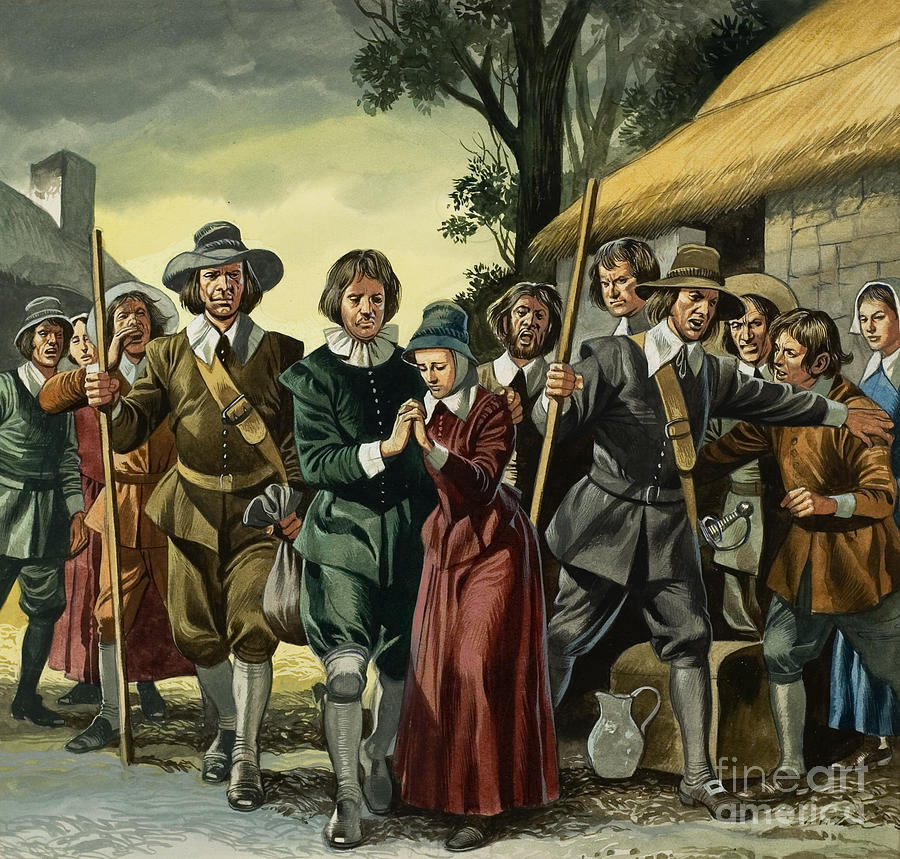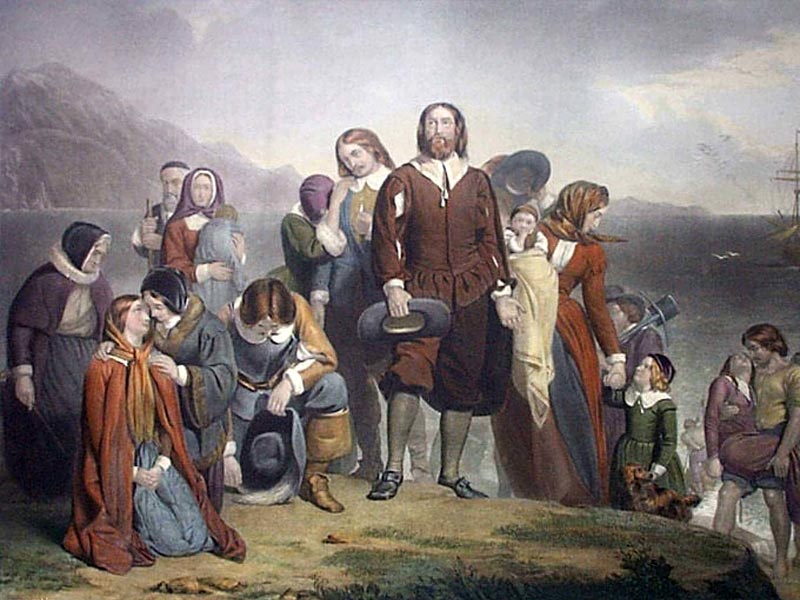
Echoes in the Wilderness: How Puritanism Forged America’s Enduring Legends
America, a nation perpetually reinventing itself, possesses a unique tapestry of legends. Unlike the ancient mythologies of the Old World, populated by gods, dragons, and epic kings, the legends of the United States often spring from a more immediate, visceral place: the struggle against a vast wilderness, the forging of a new identity, and the profound moral and spiritual anxieties inherited from its earliest European settlers. At the heart of this foundational narrative lies the indelible mark of the Puritans, whose fervent beliefs and harrowing experiences in the New World laid much of the groundwork for what would become uniquely American folklore.
When the Puritans landed on the shores of New England in the early 17th century, they brought with them not just their Bibles and their strict moral codes, but also a deeply ingrained worldview that saw the world as a battleground between God and the Devil. Their mission, as articulated by John Winthrop in his famous "City upon a Hill" sermon, was to create a beacon of righteousness, a New Jerusalem in a land they often perceived as a chaotic, demonic wilderness. This perception was not mere rhetoric; it was a lens through which they interpreted every strange sound, every inexplicable event, and every challenge to their nascent communities.
The wilderness itself became a central character in Puritan lore. It was a place of testing, a crucible where faith was either strengthened or shattered. But it was also the Devil’s domain, a haunt of "savages" (a term they often applied to both Native Americans and the wild forces of nature) and malevolent spirits. This belief system directly fueled some of America’s earliest and most chilling legends. The infamous Salem Witch Trials of 1692-1693, for instance, were not merely a product of mass hysteria but a terrifying manifestation of the Puritan belief that the Devil actively worked through human agents to undermine their holy experiment. The spectral evidence, the accusations of pacts with Satan, and the ultimate execution of 20 individuals etched a dark chapter into American history, a legend of fear and moral panic that continues to resonate.

Beyond the gallows of Salem, the Puritan landscape was rife with more subtle, yet equally potent, legends. Tales of strange lights in the woods, mysterious illnesses, or sudden misfortunes were often attributed to witchcraft or demonic influence. Sleep paralysis, a common physiological phenomenon, was frequently interpreted as a "hag riding" – the Devil or his agents sitting on one’s chest, a belief rooted in older European folklore but given a uniquely American, Puritanical spin. These were not just stories; they were cautionary tales, serving to reinforce communal vigilance and adherence to strict religious doctrine. They warned against straying from the path of righteousness, for the Devil, they believed, lurked just beyond the flickering firelight, ready to claim the unwary.
As the colonies expanded and the Puritan influence, while still strong, began to intertwine with other European traditions and the burgeoning spirit of American independence, the nature of legends began to shift. Yet, the foundational themes – the struggle between good and evil, the fear of the unknown wilderness, the search for divine purpose, and the moral consequences of human actions – remained.
Consider the legend of the Headless Horseman, immortalized by Washington Irving in "The Legend of Sleepy Hollow." While Irving drew heavily on European folklore, he transplanted it to the distinctly American setting of the Hudson Valley, a region settled by Dutch Calvinists whose worldview shared much with their Puritan neighbors. The Horseman, a spectral Hessian soldier, is a figure of terror and mystery, haunting a landscape that, like the Puritan wilderness, is imbued with a sense of the uncanny. Ichabod Crane’s flight is not just from a ghost, but from the dark, untamed forces that can overwhelm reason and order – a secularized echo of the Puritan struggle against the demonic.
As the nation pushed westward, the wilderness evolved from a source of demonic fear to a proving ground for American heroism. Figures like Daniel Boone and Davy Crockett emerged, not as mythical gods, but as larger-than-life frontiersmen who embodied courage, self-reliance, and the ability to tame the wild. Yet, even in these tales, an undercurrent of the Puritan legacy can be discerned. These heroes often operated within a strong moral framework, battling not just nature but also "savagery" (often personified by Native Americans in early white narratives) and the forces of lawlessness, mirroring the good-versus-evil dichotomy. Their legendary feats often served as moral exemplars for a burgeoning nation.
The American frontier also gave rise to the "tall tale," a uniquely American form of legend characterized by exaggeration and humor. Paul Bunyan, the colossal lumberjack, and Pecos Bill, the cowboy who rode a cyclone, represented a new kind of American spirit: one that embraced the vastness of the land and sought to conquer it with ingenuity and strength, rather than fear. While seemingly a departure from Puritan solemnity, these legends still subtly reflected a deep-seated belief in American exceptionalism and the triumph of human will over seemingly insurmountable obstacles – a secularized version of God’s chosen people overcoming challenges.
Even the rise of American outlaws like Jesse James and Billy the Kid, who became legendary figures, can be seen through a lens partially shaped by Puritan thought. These were not simple criminals; they were complex anti-heroes, often romanticized as rebels against unjust authority or as men of a certain moral code, however twisted. Their legends explored themes of justice, retribution, and the blurred lines between right and wrong in a rapidly changing society, echoing the Puritan preoccupation with sin, redemption, and divine judgment, albeit in a more ambiguous, secularized form.
In the 20th century, as America urbanized and industrialized, the legends continued to evolve, reflecting new anxieties and fascinations. Urban legends emerged, spreading through word-of-mouth and later, the internet, about phantom hitchhikers, alligators in sewers, or the specter of "Bloody Mary." These tales, while modern in their setting, often tap into primal fears of the unknown, the dangers lurking in the shadows, and the moral decay of society – themes that would not be entirely unfamiliar to a Puritan minister. The fear of the "other," whether it be a serial killer or a supernatural entity, continues to be a powerful engine for American legend, much as the fear of witches and demons once was.
Furthermore, the Puritan emphasis on a divinely ordered, yet potentially corrupted, world has contributed to America’s enduring fascination with conspiracy theories. From the assassination of JFK to the alleged alien crash at Roswell, these modern legends posit hidden forces at work, secret societies, and malevolent actors manipulating events from behind the scenes. In a sense, these are secularized versions of the Puritan belief in the Devil’s pervasive influence, seeking to explain the inexplicable and impose order on a chaotic world by identifying a hidden, often nefarious, agent.

It is crucial to acknowledge that American legends are not solely the product of Puritan influence. The rich oral traditions of Native American tribes, with their trickster figures like Coyote and Raven, their creation myths, and their deep connection to the land, represent a parallel and equally vital stream of American folklore. Similarly, the resilience and creativity of African American communities birthed powerful legends like Br’er Rabbit, who outwitted stronger adversaries, and John Henry, the steel-driving man who symbolized strength and defiance against industrial exploitation. These diverse voices have broadened and enriched the American legendary landscape, offering different perspectives on struggle, survival, and identity.
However, the enduring power of the Puritan legacy cannot be overstated. Their profound spiritual anxieties, their belief in a constant struggle between good and evil, their perception of the wilderness as both a challenge and a threat, and their deep-seated need for moral order provided the foundational soil from which many of America’s most distinctive legends first sprouted. From the spectral hangings of Salem to the headless rider of Sleepy Hollow, from the brave frontiersmen to the enigmatic outlaws, and even to the modern anxieties reflected in urban myths and conspiracy theories, the echoes of Puritan thought resonate. America’s legends are not just entertaining stories; they are a living testament to a nation’s ongoing quest for meaning, morality, and identity in a world that, for all its changes, remains as mysterious and challenging as the wilderness the Puritans first encountered. They are, in essence, the enduring whispers of a "City upon a Hill" that forever grapples with the shadows at its edges.


